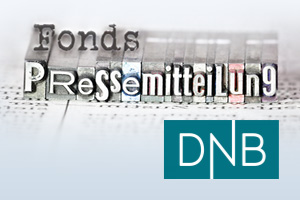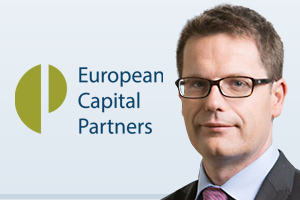
Aktuell zeichnet sich eine Erholungsbewegung bei nordischen Hochzinsanleihen ab. In diesem positiven Marktumfeld verzeichnete der DNB High Yield A Acc EUR (WKN A2AJDN, ISIN LU1303785361) im Mai eine Rendite von +3,22 Prozent – die Jahresperformance bleibt mit -10,59 Prozent hingegen weiter negativ. Der Sektor skandinavischer Hochzinsanleihen profitiert weiter von geldpolitischen Stimuli der Zentralbanken und staatlichen Konjunkturprogrammen. DNB-FondsManager Anders Buvik gibt in seinem Monatsbericht für Mai einen aktuellen Marktüberblick und berichtet über die jüngsten Veränderungen in der Portfoliostruktur des in der Strategie SJB Substanz enthaltenen Fonds.
A recovery in Nordic High Yield is under way. During May 2020 the DNB High Yield fund returned 3,22% (Inst A NOK share class) after a plus of 5,44% in April. With two good months in a row the YTD performance is -10,59% (as of June 10th).
Market environment
Markets continued to improve in May, driven by central banks stimulus and “Whatever It Takes” policies. The Coronavirus strength seems to be diminishing in most countries and new developments are being eagerly watched. The alternative cost expressed by the risk free return is close to zero, which also contributed to increased risk appetite.
Fund performance
The fund returned 3.2 percent in May. In general, cash buffers and liquidity are good amongst investors, due to inflow and NOK strengthening. Oil producers such as DNO, Siccar and Neptune contributed positively to fund return. On the other hand, companies within the oil service sector contributed negatively.
Outlook for the fund
Markets have recovered a great deal since March. We are in dialogue with some issuers on adjusting certain loan terms, and we take a constructive approach in relevant matters. The fund currently yields above 10 percent (YTM), which provides a good buffer against potential future defaults, and we still view return potential as good.
Nordic economies
The reopening of the Norwegian, Danish and Finnish economies has so far gone according to plan. Most of the measures taken in March have been reversed and life has been slowly returning to more or less normal. So far this has been possible without any increase in the number of Covid-19 cases.
Sweden did not close down to the same extent as the other Nordic countries and has relied much more on voluntary measures from the population. Sweden has a higher number of Covid-19 cases and deaths than the other Nordic countries but the economic setback has so far been smaller in Sweden as most businesses have stayed open and continue to do so.
The reopening of businesses in Norway, Denmark and Finland has led the number of unemployed and laid off workers to come down quite sharply. The bottom of the growth cycle was hit in April in all the Nordic countries and the question now is how sharp the recovery will be. The way it looks at present there is reason to be optimistic for growth rates for the next few quarters.
Oil price and exchange rates
The oil price increased from 28 to 38 USD/bbl. in May. The cuts in oil production by OPEC+ (and also other countries such as Norway) in combination with economies reopening, both the US and most countries in Europe have led to increased optimism in markets, including the oil market. In addition, a further reduction in the number of active oil rigs in the US shale market and the resulting reduced US oil production has been important. News that OPEC+ has decided to prolong the production cuts to the end of July has contributed to send the oil price even higher.
Both the SEK and the NOK strengthened in May. The SEK strengthened 2.5% and the NOK 3.9% in trade weighted terms. In Sweden we saw better (less bad) macroeconomic numbers than expected while in Norway we saw some strong figures, e.g. from the housing market and retail sales, as well as a large increase in the oil price.
Primary & secondary markets
Primary markets, which have been quiet since the end of April, finally opened up, with three new deals being priced last week. Total issuance was NOK1.7bn, after three different real estate companies tapped markets for funds. In particular, Cibus issued a 3y unsecured at Stibor+475bp, while Klövern issued a 2y secured bond at Libor+500bp.
On secondary markets the tightening was broad based (despite some widening in oil services names) and it seems as if investor demand accelerated. In general this was supported by general improvement of global high yield markets but also by strong cash positions among investors.
Comments on default rates
We expect default rates to rise. As mentioned above we are already in talks with some issuers on adjusting certain loan terms. This is an absolutely normal procedure within the high yield universe and belongs to investments in high yields. Please remember the following: Since inception of the fund the total loss is below 2% of the fund volume. The carry, the attractive YTM and the economic environment in the Nordics are quite good buffers to handle the situation. Not every default means a loss for the investors as a “default” is triggered very soon, for example if a company delays a coupon payment.



